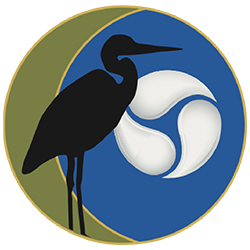The training is divided into three levels, each representing a deeper engagement with the method as you move towards becoming a skilled practitioner. Level one takes 12 days of training. Levels two and three make up the remaining 32 days.
What You Learn
Level one focuses on developing ‘personhood’ (see task 1 below). It also introduces the key Hakomi skills of ‘tracking’ (noticing and following signs of present experience), ‘contacting’ (bringing attention to present experience) and using ‘mindfulness’ in a Hakomi way.
Level two develops all the skills needed to successfully ‘do’ Hakomi. These skills are described in more detail below in terms of six key tasks.
Level three is primarily advanced training and practice through supervision. It can also be used as preparation and practice for the certification process.
The training is experiential—you learn by doing.
Six Key Tasks
The process of Hakomi has been divided into six key tasks that provide a broad framework for what you will learn.
Task One
The essence of the first task was captured by Chögyam Trungpa the Buddhist scholar and teacher, when he said that, “The basic task of helping professionals in general, and psychotherapists in particular, is to become full human beings, and to inspire full human beingness in others who feel starved about their lives.” There is clear evidence that the ‘personhood’ of the practitioner plays a substantial and significant role in the successful outcome of our kind of therapy. We take development of personhood skills and attributes very seriously throughout the training and place a special emphasis on them during level one.
Task Two
In our work as Hakomi practitioners we are interested in the habitual ways of responding to life that cause unnecessary suffering. Habits by nature are repetitive, self-reinforcing and usually outside of our awareness. The second task of the Hakomi practitioner is to help the client to become aware of these habitual ways of responding and to get ideas about how these habits are influencing (organising) their experience. You will learn to see (track) signs of the client’s present experience (physiological states, attitudes and feelings) and to gently bring their attention to these (using contact statements), especially those things they do habitually – the things that are characteristic. You’ll learn to work in partnership with the client to gather ideas about these habits, especially those that might point to implicit beliefs that are organising their experience and causing unnecessary suffering.
Task Three
The task above can be thought of as data gathering. The practitioner and client will be getting ideas about the data, what it means, where it comes from, its impact on life etc. In task three the role of the practitioner is to come up with some ways of finding out more about the ideas, to clarify current understanding by running what we call ‘little experiments’. In the training you will develop your creativity in coming up with meaningful ‘experiments’.
Task Four
The fourth task is to deepen the understanding of the ‘habit’ and its influence by skillfully carrying out the experiment. For this task you will learn to guide your client (and yourself) into a mindful state where the response to the experiment can be studied and reported.
Task Five
For the fifth task you will learn to work with the outcomes of experiments, which might include, emotions, memories and bodily responses. You’ll learn to support spontaneous behaviour, provide appropriate emotional support, which may include touch and holding, or simply being present and witnessing. You’ll learn to hold the space for the internal work of the client, while they begin to discover what they need to reorganise, to discover what we call the missing experience, an experience that if deeply ‘felt’ will allow a new, healthier way of being.
Task Six
For the sixth task you will learn to create this ‘felt’ sense of the missing experience and help the client stay with it, savor it and integrate it.

